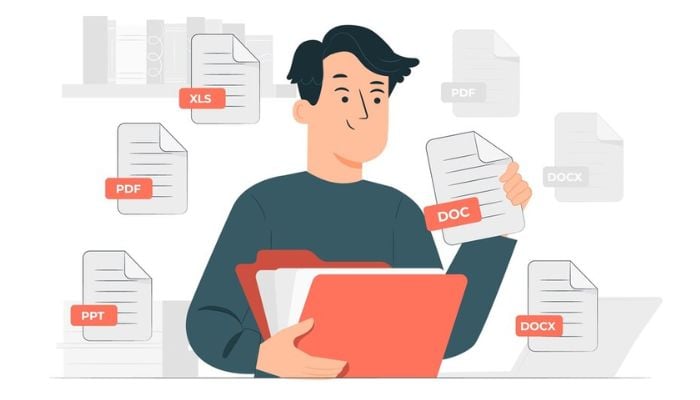
Editing PDFs is a necessity for many, yet it often seems like an insurmountable task due to the file format's design limitations. Despite an array of Windows and web applications, there hasn't been a universal solution outside of Adobe's pricey Acrobat Pro, leaving users grappling with alternatives.
Most common PDF editing methods
Labelling, or annotating, is perhaps the most prevalent means of PDF editing. It's often used when sharing PDF files to draw attention by highlighting, crossing out, commenting, or drawing on the document. This functionality is found in various PDF programs like Adobe Acrobat Reader DC, Foxit, Sumatra PDF, and even in Microsoft Edge's built-in PDF reader.
Annotations and labels exist separately from the document content within the PDF format. While these markings are transferable between programs, their appearance may differ. Shapes drawn and annotations made might vary slightly in appearance, causing differences in how the labelled PDF appears to the recipient.
Essential tools for PDF editing
- Text Marking: This includes colouring, crossing out, or underlining text, usually done by selecting a piece of text and applying these effects.
- Graphic Shapes: Drawing geometric shapes like arrows, ovals, rectangles, and lines.
- Freehand Drawing: Best done with a pencil or touchscreen.
- Adding Text: Allows users to add text over existing content, modifying font, size, and style.
- Annotations: These are special content types within the PDF, distinct from the document's regular content, akin to comments in Word.
Reordering, deleting, and rotating pages
Managing page orders or removing unwanted pages from a PDF is another common task. Users often need to rearrange or correct the orientation of pages, especially in scanned documents or for specific printing requirements.
Moving pages, deleting selected pages, or rotating pages is generally possible in most PDF editing programs. Online tools like Simple PDF provide options for rearranging pages without the need for software installation, albeit with limitations in terms of functionality.
Merging multiple PDFs
Merging multiple PDF files into one is a handy feature, often used to consolidate documents or create comprehensive files. While some free programs offer straightforward tools for merging PDFs, online services might occasionally misplace pages, complicating the merging process.
Converting PDFs to plain text
Unlike other file formats, copying or exporting text from PDFs isn't always straightforward. PDF viewers can misinterpret text formatting, leading to issues like erratic line breaks or paragraph breaks. While various methods attempt to rectify these problems, some can still leave formatting issues unresolved.
Advanced PDF editing — text and image alterations
Editing text, images, or other elements within PDFs is challenging due to the format's inherent design limitations. Free programs like PDFgear offer basic editing functionalities such as correcting spelling errors or adding text. However, more intricate changes might distort the document layout. Paid software like Acrobat Pro provides comprehensive editing capabilities, allowing precise modifications to text and images.
Creating fillable forms
Adobe Acrobat Pro is renowned for transforming flat PDFs into fillable forms. However, third-party solutions like Sejda offer alternatives, enabling users to add text fields, checkboxes, and multiple-choice menus, simplifying the process of creating interactive, fillable forms.
















